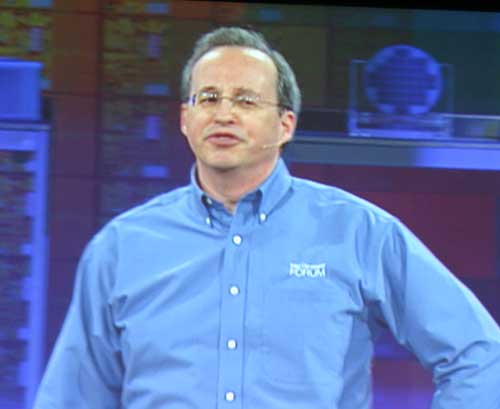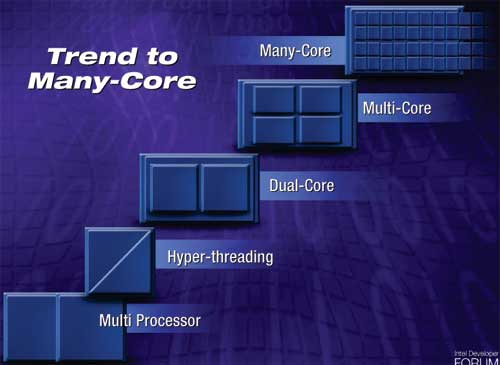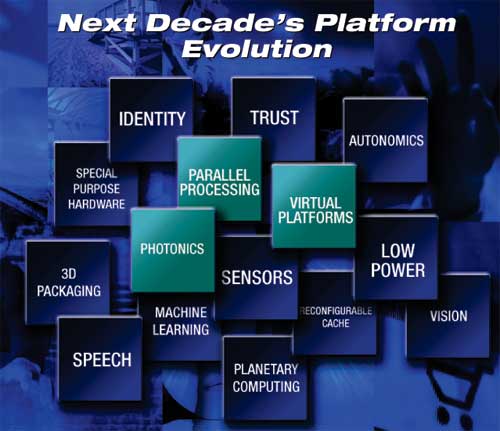IDF Spring 2005 - Day 3: Justin Rattner's Keynote, Predicting the Future
by Anand Lal Shimpi on March 3, 2005 3:17 PM EST- Posted in
- Trade Shows
The last day of IDF is usually reserved for an entertaining keynote by Pat Gelsinger, but since Pat has moved on to his new role as Senior VP and GM of the new Digital Enterprise Group, someone else had to fill his shoes.

That someone else is none other than Justin Rattner, quite possibly the best person for the job. Rattner's keynote started off with a clearly nervous tone, wouldn't you be if you were on the receiving end of the Gelsinger torch?
Mannerisms aside, Rattner is an extremely capable engineer and he should have no problems fulfilling the demands of his new role. His keynote today wasn't able to top Gelsinger's past keynotes but he's on the right track to picking up where Pat left off.

The keynote was a bit long and drawn out, but in the usual style of Gelsinger, Rattner provided a good look at what is coming down the road in a segment he called Platform 2015. The idea is to be able to look at trends that will be reality in the next decade, and here are some of the more interesting points...











15 Comments
View All Comments
HardwareD00d - Thursday, March 3, 2005 - link
Wishful thinking for Intel. Who the heck knows what will happen in 10 years. The earth will probably be taken over by Soviet Russia and Yakov Smirnov will be president.When I hear about this stuff I keep thinking back to the Prescott and how it was going to scale to 5 GHz + . Yeah right.
Dualboy24 - Thursday, March 3, 2005 - link
#2 The Super Resolution technique would work only with a video signal as stated a 3 second low resolution one. It would not work with a single still low resolution image. The software just compares the pixels and motion between frames to generate a single clean frame. 3 seconds can mean 30 to 90 frames for analysis in total depending on the rate of capture. Still very impressive how clear it made it.Impressive stuff.. I cant wait till 2015... I want 100 cores now! I bet developer tools and compilers will start to take advantage of huge multitrheading.
ZobarStyl - Thursday, March 3, 2005 - link
Anyone think the idea of sticking two cores directly on top of one another for Intel's current processor line is a little bit ambitious? We're already curious about how 2 Prescotts side by side will fare, but one on top of another, how can that dissipate such a tremendous amount of heat?quanta - Thursday, March 3, 2005 - link
Maybe it was just Anand's screenshot, but the 'Super Resolution' technique looks like someone making up the whole thing when the source text is not supposed to be readable. Perfect for tampering with evidence. :)coldpower27 - Thursday, March 3, 2005 - link
Interesting stuff.